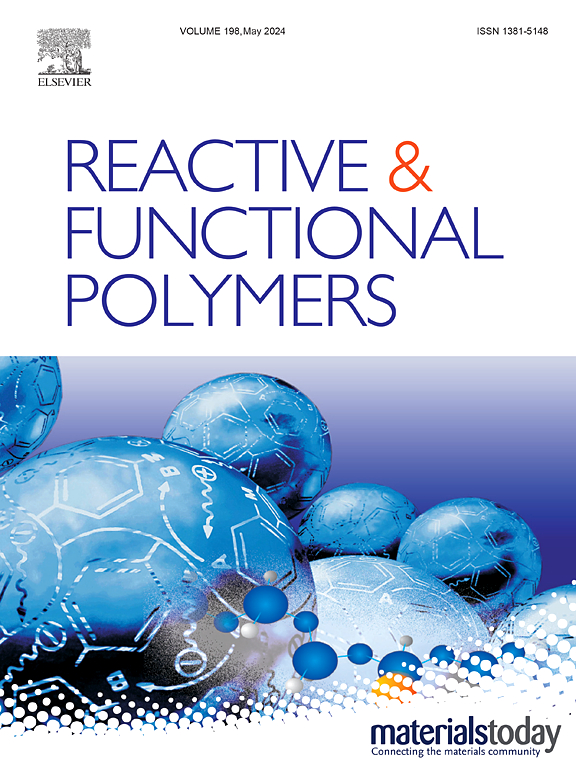Design and application of ion-imprinted chelating polymer for selective adsorption of silver ion
IF 4.5
3区 工程技术
Q1 CHEMISTRY, APPLIED
引用次数: 0
Abstract
A polymeric sorbent material that could selectively capture silver ions (Ag+) from aqueous solution was prepared by an ion-imprinting method. First, maleimide-pyridyl-thiosemicarbazide (MATCH), a chelating ligand with a polymerizable maleimide moiety, was synthesized by reacting 1-amino-1H-pyrrole-2,5-dione with 2-pyridyl isothiocyanate. The complex of Ag+/MATCH ([Ag(MATCH)(H2O)2]) was incorporated into a free radical polymerization with styrene-divinylbenzene to produce an Ag-imprinted polymeric adsorbent (Ag-IIP). The Ag-IIP showed high selectivity for Ag+ over Hg2+, Cd2+, Cu2+, Pb2+, and Zn2+ after acidified thiourea chemical elution. The maximum uptake capacity reached 296 ± 1 mg/g. The adsorption behavior followed the Sips isotherm and pseudo-second-order kinetics, confirming a chemisorption mechanism. The Ag-IIP was further tested on real wastewater from Ag![]() Zn batteries and achieved an impressively high Ag+ removal efficiency of 97 %, far outstripping the uptake of Zn2+. Superior selectivity results from the ability of imprinted binding sites for strong Ag
Zn batteries and achieved an impressively high Ag+ removal efficiency of 97 %, far outstripping the uptake of Zn2+. Superior selectivity results from the ability of imprinted binding sites for strong Ag![]() S and Ag
S and Ag![]() N coordination. Conversely, the non-imprinted polymer or NIP has much lower efficiencies of removal simply because there are no specified binding sites for the analytes.
N coordination. Conversely, the non-imprinted polymer or NIP has much lower efficiencies of removal simply because there are no specified binding sites for the analytes.

求助全文
约1分钟内获得全文
求助全文
来源期刊

Reactive & Functional Polymers
工程技术-高分子科学
CiteScore
8.90
自引率
5.90%
发文量
259
审稿时长
27 days
期刊介绍:
Reactive & Functional Polymers provides a forum to disseminate original ideas, concepts and developments in the science and technology of polymers with functional groups, which impart specific chemical reactivity or physical, chemical, structural, biological, and pharmacological functionality. The scope covers organic polymers, acting for instance as reagents, catalysts, templates, ion-exchangers, selective sorbents, chelating or antimicrobial agents, drug carriers, sensors, membranes, and hydrogels. This also includes reactive cross-linkable prepolymers and high-performance thermosetting polymers, natural or degradable polymers, conducting polymers, and porous polymers.
Original research articles must contain thorough molecular and material characterization data on synthesis of the above polymers in combination with their applications. Applications include but are not limited to catalysis, water or effluent treatment, separations and recovery, electronics and information storage, energy conversion, encapsulation, or adhesion.
 求助内容:
求助内容: 应助结果提醒方式:
应助结果提醒方式:


